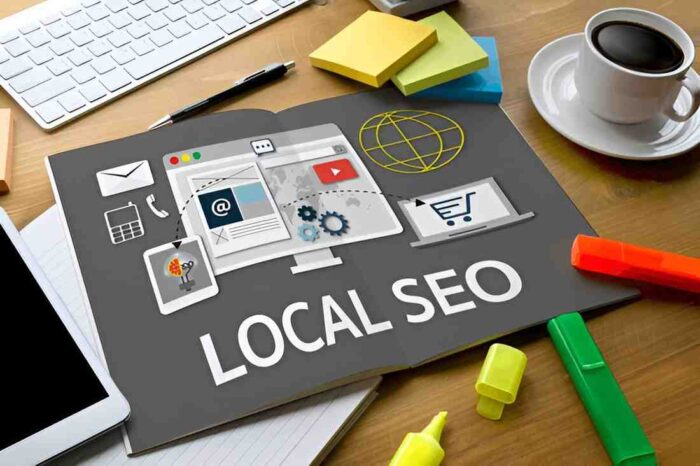Lead nurturing is an essential part of modern marketing strategies. Without it, your leads may lose interest, and sales opportunities may slip away. I’ve spent considerable time researching various tools for managing and automating lead nurturing. After testing and analyzing numerous options, I want to share my insights on some of the best software available today. This guide aims to provide you with a thorough understanding of lead nurturing software, how they compare, and how they can help you grow your business.
What is Lead Nurturing?
Lead nurturing refers to the process of developing relationships with prospects throughout their journey. It’s about guiding potential customers from their first interaction with your brand to the point where they’re ready to purchase. The goal is to keep the conversation going, build trust, and provide value at every stage.
The Need for Automation in Lead Nurturing
As businesses grow, the volume of leads increases. Managing each lead manually becomes a time-consuming task. That’s where automation comes in. Automating lead nurturing allows businesses to stay in touch with leads at scale without compromising the quality of communication.
Features to Look for in Lead Nurturing Software
When evaluating lead nurturing software, here are some features I consider crucial:
- Email Marketing Automation: Creating automated workflows to nurture leads via personalized email campaigns.
- Lead Scoring: Automatically categorizing leads based on their engagement and likelihood to convert.
- CRM Integration: Synchronizing with Customer Relationship Management (CRM) systems for smooth lead tracking and data management.
- Segmentation: Dividing your audience into specific groups to send the right message at the right time.
- Analytics and Reporting: Tracking and measuring the effectiveness of campaigns to refine strategies.
- Multi-Channel Support: Reaching out to leads through various channels such as email, social media, and text messages.
I’ll compare different software platforms that incorporate these features, and I’ll highlight their strengths and weaknesses. Let’s dive into some of the top tools that stood out to me.
1. HubSpot
Overview: HubSpot is one of the most well-known platforms for inbound marketing and lead nurturing. I’ve used HubSpot for multiple campaigns, and it’s clear why it’s a favorite among marketers.
Key Features:
- Email Automation: HubSpot offers powerful email automation features. You can set up complex workflows that trigger emails based on lead behavior, like downloading an eBook or clicking a specific link.
- Lead Scoring: The software automatically assigns scores to leads based on their activities, allowing me to prioritize high-quality leads.
- CRM Integration: HubSpot’s CRM is seamlessly integrated, so I can track all interactions with a lead in one place.
- Analytics: The platform provides detailed insights into open rates, click-through rates, and overall campaign performance.
Pros:
- All-in-one solution (CRM, email marketing, and lead nurturing).
- Easy to set up and use.
- Great educational resources and support.
Cons:
- The free version is limited in features.
- Some users find it a bit expensive for small businesses.
Best For: Companies looking for an all-in-one solution that is easy to use and integrates lead nurturing with CRM.
2. ActiveCampaign
Overview: ActiveCampaign is another excellent choice for automating lead nurturing. It’s known for its user-friendly interface and deep functionality.
Key Features:
- Advanced Automation: ActiveCampaign’s automation capabilities allow me to set up complex workflows that span multiple actions, such as emails, text messages, and site visits.
- Segmentation: I can create highly specific segments to send the most relevant content to each lead based on their behavior.
- CRM Integration: ActiveCampaign has a built-in CRM that provides a comprehensive view of lead interactions.
- Lead Scoring: Just like HubSpot, it offers robust lead scoring, helping me focus on the most promising leads.
Pros:
- Excellent segmentation and automation capabilities.
- Highly customizable workflows.
- Affordable pricing, especially for small businesses.
Cons:
- Some advanced features require a higher-tier plan.
- It may take some time to learn the interface for beginners.
Best For: Small to medium-sized businesses looking for powerful automation at a reasonable price.
3. Marketo
Overview: Marketo, now owned by Adobe, is known for its enterprise-level solutions. I’ve found it particularly useful for large organizations needing a scalable lead nurturing system.
Key Features:
- Email Automation: Marketo’s email automation is highly sophisticated, allowing me to design multi-step workflows that cater to specific buyer journeys.
- Lead Scoring and Nurturing: Marketo provides advanced lead scoring capabilities, letting me determine which leads are sales-ready and which need more nurturing.
- Analytics and Reporting: Marketo’s reporting features are detailed and comprehensive, helping me track performance across all channels.
- CRM Integration: It integrates well with Salesforce and other CRMs, providing a seamless experience for teams.
Pros:
- Powerful automation and advanced analytics.
- Great for large-scale campaigns.
- Excellent integration with other tools.
Cons:
- Expensive, especially for small businesses.
- Requires a steep learning curve.
Best For: Large enterprises looking for a robust and scalable solution.
4. Mailchimp
Overview: Mailchimp is widely known for its email marketing capabilities, but it’s also a strong contender for lead nurturing, especially for small businesses.
Key Features:
- Email Campaigns: Mailchimp offers easy-to-use email campaign builders and automations that can be set up based on triggers.
- Segmentation: With Mailchimp, I can create segments based on various criteria like location, behavior, and engagement.
- Analytics: Mailchimp’s reporting tools give me insight into open rates, click-through rates, and more.
- CRM Integration: Mailchimp integrates with many popular CRMs to ensure smooth data flow.
Pros:
- Affordable pricing, especially for beginners.
- Simple interface and user-friendly tools.
- Excellent for small businesses.
Cons:
- Limited lead scoring capabilities.
- Some advanced features are available only in the premium plan.
Best For: Small businesses or those just starting with lead nurturing.
5. Pardot
Overview: Pardot, a Salesforce product, is a marketing automation platform built for B2B organizations. I find it particularly useful for businesses with long sales cycles and complex buyer journeys.
Key Features:
- Lead Scoring and Grading: Pardot offers advanced lead scoring, helping me identify high-value leads and determine when they’re ready for sales outreach.
- Email Marketing Automation: Pardot’s email automation is robust, with triggered campaigns and dynamic content.
- CRM Integration: Integration with Salesforce is seamless, which is perfect for teams already using it for CRM.
- Analytics: Pardot’s reporting tools are deep, giving me insights into every stage of the funnel.
Pros:
- Excellent for B2B lead nurturing.
- Integrates seamlessly with Salesforce.
- Detailed reporting and analytics.
Cons:
- Can be expensive for small businesses.
- The interface isn’t as intuitive as some competitors.
Best For: B2B businesses using Salesforce as their CRM.
6. Drip
Overview: Drip is another great tool for automating lead nurturing, especially for e-commerce businesses. I’ve seen many e-commerce marketers use Drip to engage leads and drive conversions.
Key Features:
- E-commerce Focus: Drip provides features specifically designed for e-commerce, such as abandoned cart emails and post-purchase follow-ups.
- Email Automation: It offers advanced email workflows based on customer behavior and segmenting leads based on past actions.
- Segmentation: Drip allows me to segment based on purchase history, browsing activity, and more.
- Integrations: It integrates with popular platforms like Shopify, WooCommerce, and more.
Pros:
- E-commerce-centric features.
- Highly customizable workflows.
- Great customer support.
Cons:
- Aimed primarily at e-commerce businesses.
- Can be a bit pricey for smaller companies.
Best For: E-commerce businesses looking for advanced lead nurturing automation.
Comparison Table
| Feature | HubSpot | ActiveCampaign | Marketo | Mailchimp | Pardot | Drip |
|---|---|---|---|---|---|---|
| Email Automation | Yes | Yes | Yes | Yes | Yes | Yes |
| Lead Scoring | Yes | Yes | Yes | Limited | Yes | Yes |
| CRM Integration | Yes | Yes | Yes | Yes | Yes (Salesforce) | Yes |
| Multi-Channel Support | Yes | Yes | Yes | No | Yes | Yes |
| Segmentation | Yes | Yes | Yes | Yes | Yes | Yes |
| Analytics & Reporting | Yes | Yes | Yes | Yes | Yes | Yes |
| Best For | SMBs, all-in-one | Small-Mid Businesses | Large Enterprises | Small Businesses | B2B Companies | E-commerce |
Conclusion
In my experience, choosing the right software for managing and automating lead nurturing depends on your business needs. HubSpot is an excellent all-in-one tool for businesses of all sizes. ActiveCampaign offers affordable and powerful automation, making it ideal for small to medium-sized businesses. For large enterprises, Marketo and Pardot are unbeatable due to their depth and scalability, though they come at a higher cost.
Mailchimp remains the best choice for small businesses starting out, and Drip is tailored specifically for e-commerce businesses looking for advanced automation.
Before choosing any tool, it’s important to assess your business size, budget, and the specific features you need. Lead nurturing is a long-term strategy, and finding the right software to support that journey is essential for sustained growth.





